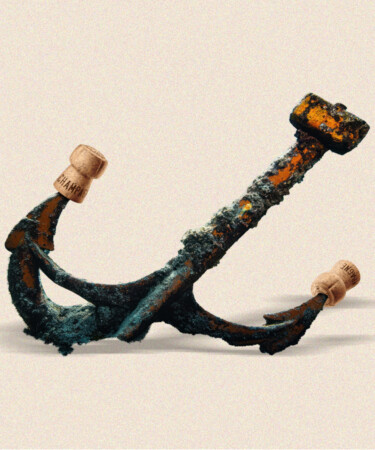Wine has been produced in the Champagne region of France since the 5th century, but it wasn’t until the 1600s that Champagne as we know it today would come to be. And following the establishment of the first Champagne house by the Ruinart family in 1729, the region catapulted to prestige status. By the 19th century, France’s sparkling wine had established itself as the drink of the upper echelon, with royals from Russia to England consuming boatloads of the stuff — literally.
In order to get all of this Champagne around the European continent, it was necessary to take some relatively treacherous trade routes. One of those routes was through the Baltic Sea, a crucial passage to get bottles to Estonia, Latvia, Lithuania, and Russia, where tsars, especially Tsar Alexander II, drank it as a part of everyday life. But navigating the Baltic Sea, with its tiny islands and unique weather patterns, meant that many of these ships never made it to their final destination.
See, the Baltic Sea is home to thousands of islands all grouped into a handful of archipelagos. Naturally, navigating these compact land masses — the smallest of which is just 0.013 square miles — was quite a challenge for large merchant ships. Making matters even more difficult is the fact that the Baltic Sea is very shallow, with average depths of just 180 feet. These shallow waters combined with tight channels made seamanship strenuous on the best days — it was another story when storms rolled in.
The Baltic’s Northern European location means that it’s smack in the middle of two air pressure systems impacting climate: the North Atlantic Oscillation and the Azores High. These two systems interact and collide with Eurasian air pressure systems, making the region highly susceptible to storms. And these types of severe storms can easily push ships into the rocky islands and rough underbelly of the sea.
It’s estimated that as many as 100,000 ships have succumbed to the Baltic Sea, many of which were transporting Champagne, with their goods lost to the ocean forever. At least, that’s the theory. But the Baltic Sea isn’t just unique for the number of shipwrecks that have happened in its waters. It’s also unique for its ability to preserve these wrecks — and a lot of the Champagne that was on board.
Rather than consisting purely of saltwater, the Baltic Sea is a brackish body of water, meaning its contents are a mixture of fresh and salt water. As such, the salinity level is much lower than that of oceans or other seas, with around seven practical salinity units (PSU). (For reference, the Atlantic Ocean hovers around 35 PSU.) This low salinity level prevents shipworms — molluscs that attach to and consume wood — from flourishing, which allows sunken ships to maintain their structure for decades. Moreover, the Baltic’s waters are cold and dark, which, along with the relative lack of salt, act as a natural preservative for shipwrecks and the goods on board.
And in 1998, people realized for the first time just how good of a cellar the Baltic Sea can be for Champagne. That year, a team of Swedish divers came across the remains of the Jönköping, a St. Petersburg-bound vessel that sank to the bottom of the sea in October 1916 when it was shot at by a German U-boat.
On board the boat were 3,000 bottles of 1907 Heidsieck & C ° Monopole Goût Américan, almost all of which survived the 80-plus years underwater. The wine, which has been miraculously preserved, is said to have an aroma dominated by banana and apple before a well-structured and youthful palate with notes of citrus and roast almond takes over. Bottles of this shipwrecked Champagne are still available for purchase today, though good luck getting your hands on one. The one currently on menu at Singapore’s Atlas is listed for a whopping 190,700 SGD — roughly $150,000.
Another discovery came just over a decade later when diver Christian Ekström located the Föglö wreck off the coast of the Åland Islands, a crash that’s also known as the Champagne Schooner. On board the ship were 168 bottles of Champagne dating back to 1841 that researchers have come to identify as bottles of Juglar (a now-defunct house), and Veuve Clicquot. Given the date of the bottles, some of those on board the ship were thought to have been bottled by the widow herself, Barbe Nicole Clicquot Ponsardin.
Just like the Heidsieck discovery, the Veuve Clicquot Champagne was also not just safe to consume — but extremely delicious. When the wines were tasted by local sommelier Ella Grüssner Cromwell-Morgan, they were reported to be sweet and lush.
In 2024, more shipwrecked Champagne was found. In July of last year, Polish diver and underwater photographer Tomasz Stachura and his team uncovered the remains of a wreck they estimate to have taken place between 1850 and 1867. And on that ship were over 100 bottles of intact Champagne experts hypothesize belong to Louis Roederer, though it still remains unclear whether or not these wines are safe to consume.
If other bottles are to serve as precedent, though, that Louis Roederer Champagne is likely to taste fantastic.
